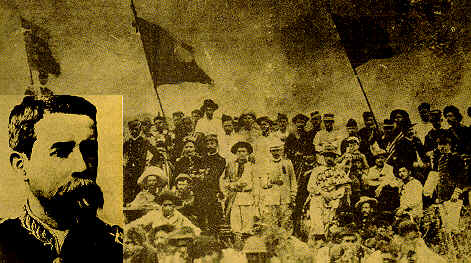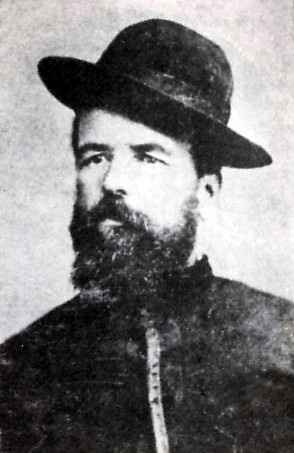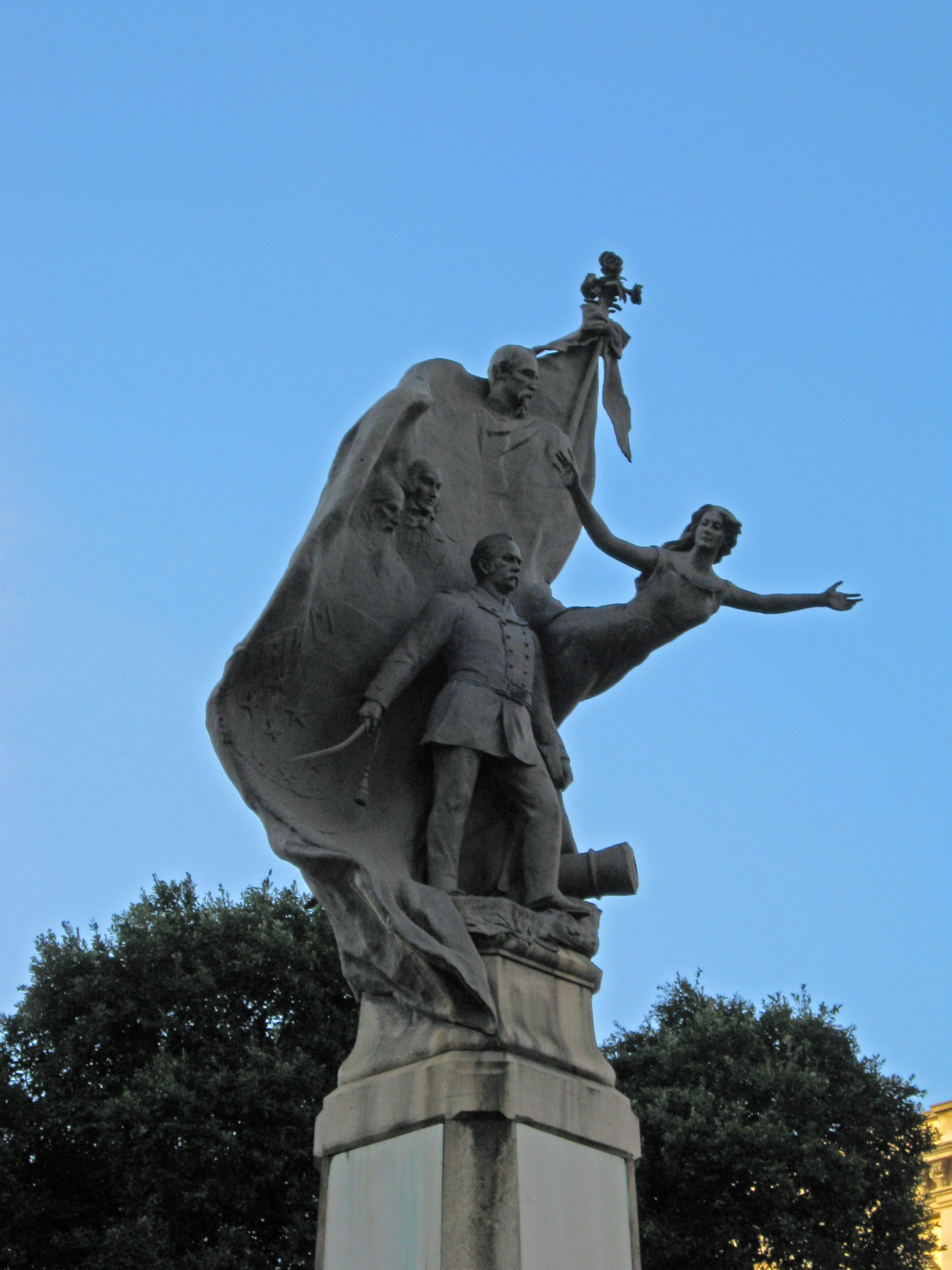|
Siege Of Lapa
The siege of Lapa was a military confrontation involving the Brazilian Army, the National Guard, the Military Police of Paraná state and civilian volunteers, which took place during the Federalist Revolution in early 1894. The city of Lapa became the arena of a bloody confrontation between the loyalist republican troops, commonly called ''pica-paus'' (woodpeckers) against the '' maragatos'', federalist rebels, who opposed the presidential form of government. The loyalists resisted the siege for 26 days, but succumbed due to the lack of ammunition and food. The siege gave president Floriano Peixoto enough time to gather and equip soldiers in São Paulo São Paulo (, ; Portuguese for ' Saint Paul') is the most populous city in Brazil, and is the capital of the state of São Paulo, the most populous and wealthiest Brazilian state, located in the country's Southeast Region. Listed by the Ga ... to fight back the federalist advance. The besieged forces numbered between 700 ... [...More Info...] [...Related Items...] OR: [Wikipedia] [Google] [Baidu] |
Federalist Revolution
The Federalist Revolution ( Portuguese: ''Revolução Federalista'') was a civil war that took place in southern Brazil between 1893 and 1895, fought by the federalists, opponents of Rio Grande do Sul state president, Júlio de Castilhos, seeking greater autonomy for the state, decentralization of power by the newly installed First Brazilian Republic and, arguably, the restoration of the monarchy. Inspired by the monarchist ideologies of , who had been one of the most prominent politicians by the end of the monarchy and acted as political head of the revolution, the federalists had Gumercindo Saraiva as the military head supported by his brother Aparicio Saravia, of the Uruguayan National Party, and by the Navy rebels who, after being defeated at the capital following the Rio de Janeiro Affair, moved south to strengthen the federalist forces. Also known as ''maragatos'', the federalists fought the republican forces of the Brazilian Army headed by the Rio Grande do Sul sen ... [...More Info...] [...Related Items...] OR: [Wikipedia] [Google] [Baidu] |
Lapa, Paraná
Lapa is a municipality in the state of Paraná, in the Southern Region of Brazil. The municipality contains the Monge State Park, created in 1960. See also *List of municipalities in Paraná This is a list of the municipalities in the state of Paraná (PR), located in the South Region of Brazil. Paraná is divided into 399 municipalities, which are grouped into 39 microregions, which are grouped into 10 mesoregions. See also *G ...Genealogy of the emigrants from Bukovina in Lapa, Brazil References Municipalities in Paraná {{ParanáBR-geo-stub ... [...More Info...] [...Related Items...] OR: [Wikipedia] [Google] [Baidu] |
Paraná (state)
Paraná () is one of the 26 states of Brazil, in the south of the country, bordered on the north by São Paulo state, on the east by the Atlantic Ocean, on the south by Santa Catarina state and the province of Misiones, Argentina, and on the west by Mato Grosso do Sul and Paraguay, with the Paraná River as its western boundary line. It is subdivided into 399 municipalities, and its capital is the city of Curitiba. Other major cities are Londrina, Maringá, Ponta Grossa, Cascavel, São José dos Pinhais and Foz do Iguaçu. The state is home to 5.4% of the Brazilian population and has 6.2% of the Brazilian GDP. Crossed by the Tropic of Capricorn, Paraná has what is left of the araucaria forest, one of the most important subtropical forests in the world. At the border with Argentina is the National Park of Iguaçu, considered by UNESCO as a World Heritage Site. At only from there, at the border with Paraguay, the largest dam in the world was built, the Hidroelétrica de Itaipu ... [...More Info...] [...Related Items...] OR: [Wikipedia] [Google] [Baidu] |
Brazil
Brazil ( pt, Brasil; ), officially the Federative Republic of Brazil (Portuguese: ), is the largest country in both South America and Latin America. At and with over 217 million people, Brazil is the world's fifth-largest country by area and the seventh most populous. Its capital is Brasília, and its most populous city is São Paulo. The federation is composed of the union of the 26 States of Brazil, states and the Federal District (Brazil), Federal District. It is the largest country to have Portuguese language, Portuguese as an List of territorial entities where Portuguese is an official language, official language and the only one in the Americas; one of the most Multiculturalism, multicultural and ethnically diverse nations, due to over a century of mass Immigration to Brazil, immigration from around the world; and the most populous Catholic Church by country, Roman Catholic-majority country. Bounded by the Atlantic Ocean on the east, Brazil has a Coastline of Brazi ... [...More Info...] [...Related Items...] OR: [Wikipedia] [Google] [Baidu] |
Maragato (Brazil)
Maragato is a name given in Brazil to the southerners who initiated the Federalist Revolution (1893-1895) in protest against the federal government. The conflict affected the entire southern region of the country In the state of Rio Grande do Sul the movement was represented by Silveira Martins. They wore red neckerchiefs for identification, symbolizing their opposition. = Origin = The term used to have a pejorative connotation attributed by loyalists to the rebels that were led by Gaspar da Silveira Martins, one of the most prominent politicians by the end of the monarchy and eminent commander, and the strategist caudillo, Gumercindo Saraiva, who left exile in Uruguay and entered Rio Grande do Sul at the head of an army wearing red neckerchiefs. The name Maragato (originally pejorative, then embraced by the rebels themselves) came from the fact that their leaders had been in exile in a region of Uruguay heavily populated by emigrants from La Maragatería in Spain, trying to d ... [...More Info...] [...Related Items...] OR: [Wikipedia] [Google] [Baidu] |
First Brazilian Republic
The First Brazilian Republic, also referred to as the Old Republic ( pt, República Velha ), officially the Republic of the United States of Brazil, refers to the period of Brazilian history from 1889 to 1930. The Old Republic began with the deposition of Emperor Pedro II in 1889, and ended with the Brazilian Revolution of 1930 that installed Getúlio Vargas as a new president. During the First Brazilian Republic, Brazil was dominated by a form of machine politics known as coronelism, in which the political and economic spheres were dominated by large landholders. The most powerful of such landholders were the coffee industry of São Paulo and the dairy industry of Minas Gerais. Because of the power of these two industries, the Old Republic's political system has been described as "milk coffee politics." Overview On November 15, 1889, Marshal Deodoro da Fonseca deposed Emperor Pedro II, declared Brazil a republic, and reorganized the government. According to the new republican ... [...More Info...] [...Related Items...] OR: [Wikipedia] [Google] [Baidu] |
Gumercindo Saraiva
Gumercindo Saraiva (Arroio Grande, January 13, 1852 – Carovi, Capão do Cipó, August 10, 1894) was a Brazilian soldier, being one of the commanders of the rebel troops known as '' maragatos'', during the Federalist Revolution. The beginning of the revolution In 1892, the Government of Júlio Prates de Castilhos entered a period of instability. With the state of Rio Grande do Sul at a boiling point, the Federalist Revolution was starting, with rebel troops being led by the general João Nunes da Silva Tavares, known as Joca Tavares. Saraiva decided to flee to Uruguay, where the rebel troops were gathering, after having refused to join the loyalist troops. On February 2, 1893, accompanied by his brother Aparicio Saravia and leading about 400 mounted troops, he crossed the border in a small town called Serrilhada, entering Rio Grande do Sul and joining the men of general Joca Tavares, thus forming the Liberator Army, a contingent of more than 3000 men. Shortly, newcomers inflate ... [...More Info...] [...Related Items...] OR: [Wikipedia] [Google] [Baidu] |
Gomes Carneiro
Antônio Ernesto Gomes Carneiro (November 28, 1846 – February 9, 1894) was a Brazilian army officer and veteran of the Paraguayan War. Antônio Ernesto Gomes Carneiro fought on the side of the Republican government in the Federalist Revolution, where he was killed in action, during the Siege of Lapa. Carneiro died unaware of his promotion to Brigade General, which was awarded the day prior to his death, for his actions in battle. Carneiro began his military career when he graduated from the Instituto Militar de Engenharia The ''Instituto Militar de Engenharia'' (IME; en, Military Institute of Engineering) is an engineering institute maintained by the Brazilian Army with federal support. IME is the oldest and one of the best ranked engineering schools in Brazil ... (Brazilian military academy) in 1872. In 1875 Carneiro received the rank of lieutenant and was subsequently awarded the rank of captain in 1877. He was then promoted to the rank of major in 1887, a lieutenant col ... [...More Info...] [...Related Items...] OR: [Wikipedia] [Google] [Baidu] |
Nordenfelt Gun
The Nordenfelt gun was a multiple-barrel organ gun that had a row of up to twelve barrels. It was fired by pulling a lever back and forth and ammunition was gravity fed through chutes for each barrel. It was produced in a number of different calibres from rifle up to 25 mm (1 inch). Larger calibres were also used, but for these calibres the design simply permitted rapid manual loading rather than true automatic fire. This article covers the anti-personnel rifle-calibre (typically 0.45 inch) gun. Development The weapon was designed by a Swedish engineer, Helge Palmcrantz. He created a mechanism to load and fire a multiple barreled gun by simply moving a single lever backwards and forwards. It was patented in 1873. Production of the weapon was funded by a Swedish steel producer and banker (later weapons maker) named Thorsten Nordenfelt, who was working in London. The name of the weapon was changed to the Nordenfelt gun. A plant producing the weapon was set up in Engl ... [...More Info...] [...Related Items...] OR: [Wikipedia] [Google] [Baidu] |
Floriano Peixoto
Floriano Vieira Peixoto ( 30 April 1839 – 29 June 1895), born in Ipioca (today a district of the city of Maceió in the State of Alagoas), nicknamed the "Iron Marshal", was a Brazilian soldier and politician, a veteran of the Paraguayan War, and the second president of Brazil. He was the first vice president of Brazil to have succeeded the president mid-term. Election Peixoto was an army marshal when elected vice-president in February 1891. In November 1891, he rose to the presidency after the resignation of Marshal Deodoro da Fonseca, the first president of Brazil. Peixoto came to the presidency in a difficult period of the new Brazilian Republic, which was in the midst of a general political and economic crisis made worse by the effects of the bursting of the Encilhamento economic bubble. As Vice President, he had also served as the President of the Senate. Presidency His government was marked by several revolutions. Peixoto defeated a naval officers' rebellion ... [...More Info...] [...Related Items...] OR: [Wikipedia] [Google] [Baidu] |
São Paulo (state)
São Paulo () is one of the Federative units of Brazil, 26 states of the Brazil, Federative Republic of Brazil and is named after Paul of Tarsus, Saint Paul of Tarsus. A major industrial complex, the state has 21.9% of the Brazilian population and is responsible for 33.9% of Brazil's GDP. São Paulo also has the List of Brazilian federative units by Human Development Index, second-highest Human Development Index (HDI) and GDP per capita, the List of Brazilian states by infant mortality, fourth-lowest infant mortality rate, the List of Brazilian states by life expectancy, third-highest life expectancy, and the List of Brazilian states by literacy rate, third-lowest rate of illiteracy among the federative units of Brazil. São Paulo alone is wealthier than Argentina, Uruguay, Paraguay, and Bolivia combined. São Paulo is also the world's twenty-eighth-most populous Administrative division, sub-national entity and the most populous sub-national entity in the Americas. With more than 4 ... [...More Info...] [...Related Items...] OR: [Wikipedia] [Google] [Baidu] |





.jpg)